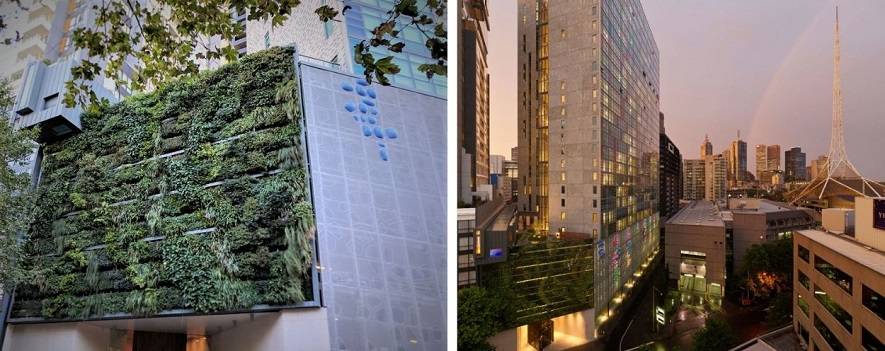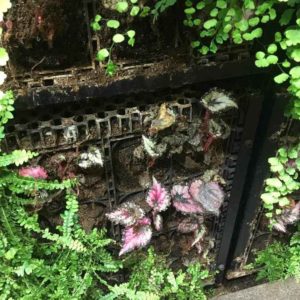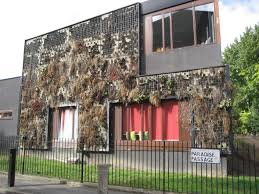The importance of ecological sustainability in green infrastructures

The Triptych Apartments in Melbourne’s South Bank. This vertical garden used about 30 species from grasses, ground covers, succulents and dwarf shrubs. This green wall was installed nearly 10 years ago and is still flourishing today. Photo: Fytogreen.
Green infrastructure is a term that incorporates all manner of foliage on a built structure. Sometimes it is simply referred to as green walls. However, green infrastructure goes beyond the traditional walls such as outdoor green facades or indoor green screens, vertical gardens, hanging arbours, and columns. It also covers roof gardens – something that is under-utilised here in New Zealand.
When creating any green infrastructure, the key for clients is to create ecological sustainability. At its most basic level, this means creating gardens that thrive for the natural life span of the plants used.
Gardens should be created with more than aesthetics in mind. Healthy plant ecology is crucial – and whilst it’s important for any type of green infrastructure or garden to look great, long term ecological sustainability is now becoming a primary focus.

Another example of an indoor green screen installed using ecologically sustainable practices many years after installation. Credit: Fytogreen.
Designing an ecologically sustainable green infrastructure
Many vertical garden suppliers continue to design gardens on buildings with aesthetics as the driver, not plant survival.
At SRS, this is where our experience can help to get both the ecological sustainability and the aesthetics working in harmony. This is what we do with all the green infrastructure projects we deliver.
It all starts at the design concept stage.
Selecting the right plants for every location
The first steps of creating an ecologically sustainable green infrastructure start by understanding the type of garden required. We gather specific data about the location of the garden, and this helps to inform us about the right types of plant for the environment in which they will be planted.
SRS use a tertiary qualified botanist to select a plant palette that we know will thrive in that specific location. It’s important to work with a specialist as the selection of the most suitable plant palette requires in-depth research of plants as well as an in-depth understanding and knowledge of a huge variety of both native and imported plants.
Then the botanist develops a planting array that essentially becomes an ecology of plants for the garden.
Our botanist will often use natives where possible, but these are not always best-suited to the green wall application. That is where a qualified botanist gives us an advantage. As well as in-depth knowledge of all plants, including natives, the botanists we work with have built up a deep understanding of the best plants to suit the often harsh environments of green infrastructure.
Selecting the right growing mediums
The second step to achieving ecological sustainability of gardens on buildings is to use a growing medium that outlasts the life span of all the plants used in the garden.
This is where it gets technical as there is a range of garden types that include roof gardens, green facades (vines growing up a support system), vertical gardens (a range of plants arrayed on a host wall), arbours or planter boxes, and stacks of planter boxes and/or pots. Some of these use soils and there is a range of soil types that are long-lasting and do not require regular replenishment.
Here at SRS, we use mineral-based soils for roof gardens and planter boxes, however, for vertical gardens and lightweight arbours we use soilless growing mediums or hydroponics so that the growing medium will outlast the plants growing in them.




Examples of vertical gardens planted using soils and not following ecologically sustainable practices and design.
Summary
If you look at nature, you never see a forest limited to just a few species. There are always 100s of plant types and species adapted to the microclimates of a forest. Our botanist uses the same principle in his design. Taking inspiration from nature is the way to work towards creating green infrastructures that are ecologically sustainable and here at SRS, we are committed to delivering ecologically sustainable green infrastructure projects right here in New Zealand. Chat to the team today.
